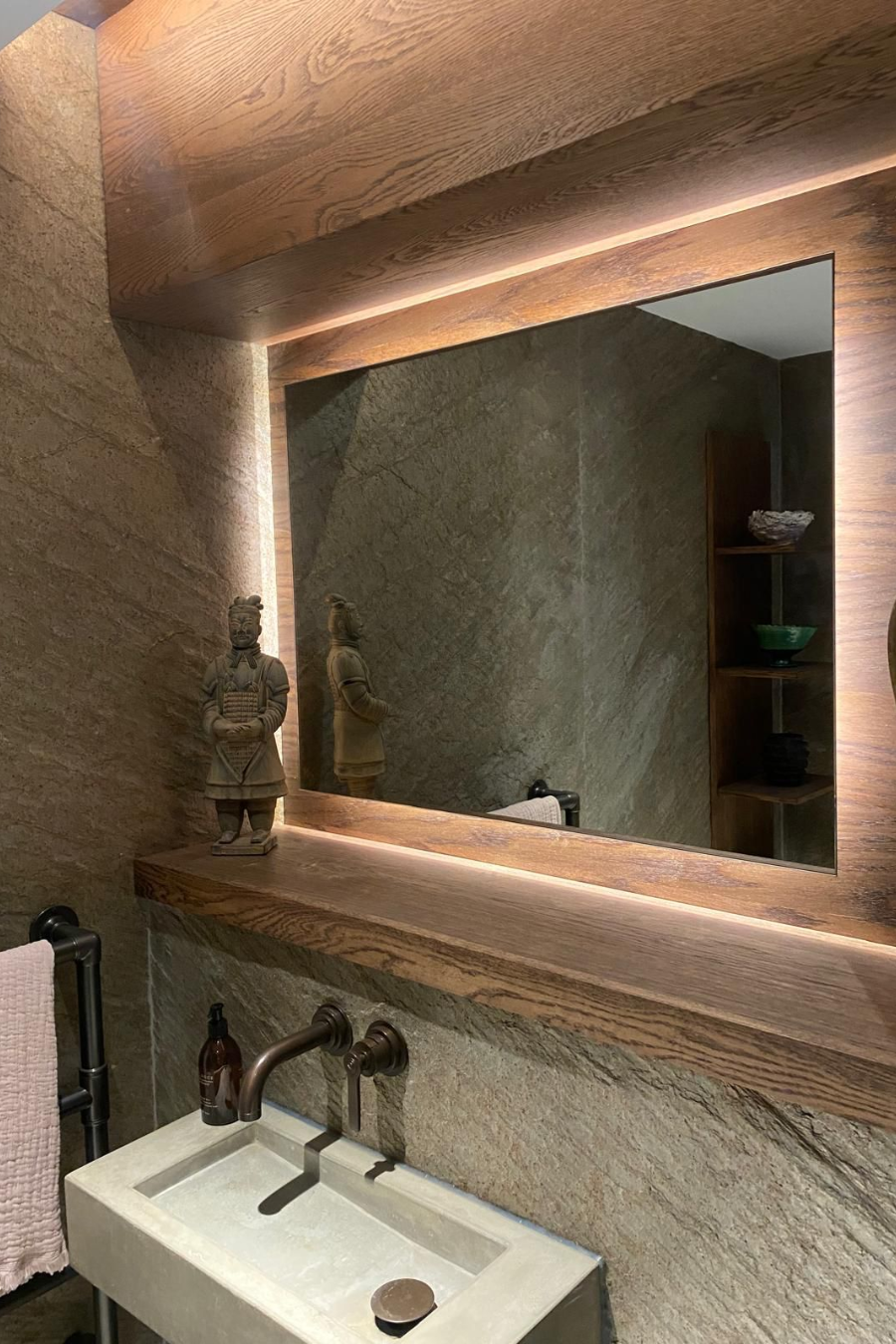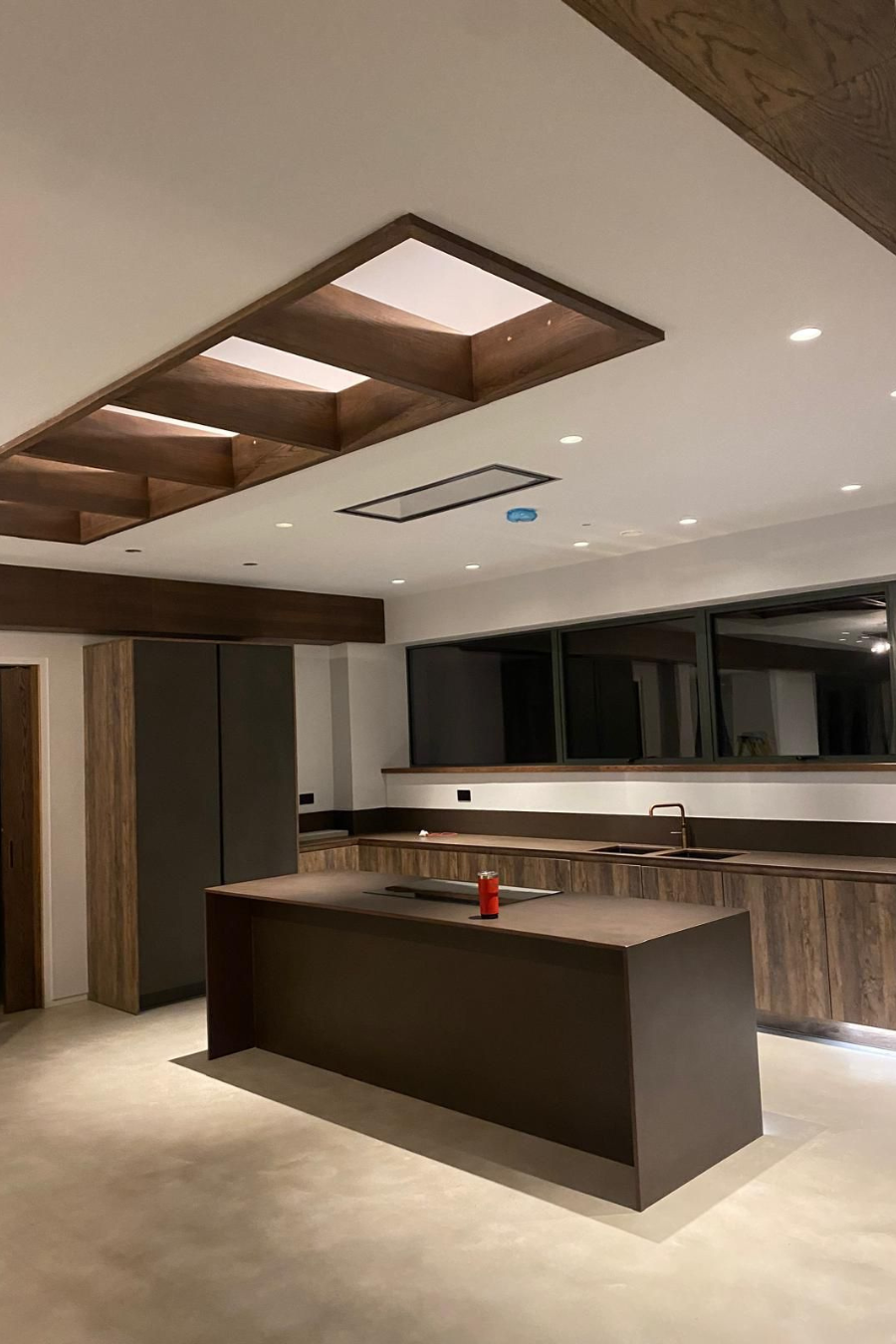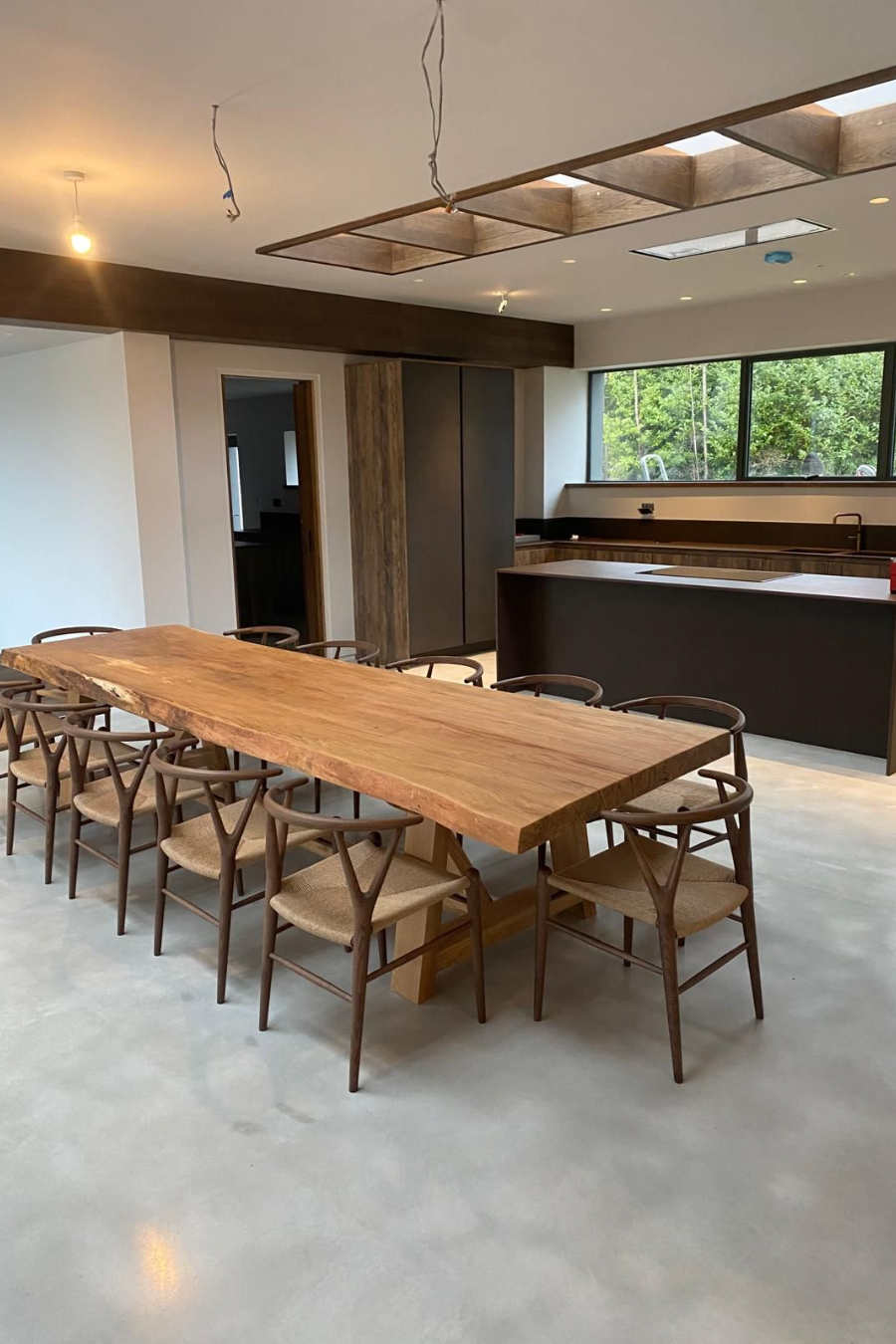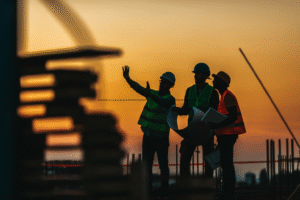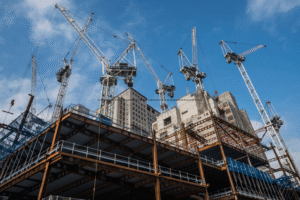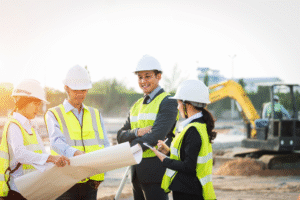What Are Sustainable Building Solutions in Wakefield?
Sustainable building solutions in Wakefield use eco-friendly materials, efficient energy systems, and waste reduction strategies to lower environmental impact. The goal is to create energy-efficient, resilient, healthy, and cost-effective buildings. These solutions rely on renewable energy sources, advanced insulation techniques, and smart building management systems that monitor energy consumption. Integrating these resource-efficient processes helps lower carbon footprints and decreases reliance on non-renewable energy sources, aligning with sustainability targets, net zero emissions, and renewable energy solutions.
Which Eco-Friendly Materials Are Used in Sustainable Construction?
Eco-friendly materials are fundamental in Wakefield’s sustainable construction. Suppliers favour products with low embodied energy and high recyclability. Examples include reclaimed timber, recycled steel, and green insulation materials like sheep’s wool or cellulose. These materials lower overall energy consumption and add durability and aesthetic appeal. For instance, reclaimed timber not only reduces waste but also provides unique character, while innovative materials like bamboo offer rapid renewability. High-performance glazing further improves thermal efficiency and decreases heat loss, supporting efficient energy consumption.
How Does Sustainable Construction Reduce Environmental Impact?
By decreasing greenhouse gas emissions, minimising waste, and using renewable energy, sustainable construction reduces environmental impact. Energy-efficient systems—such as solar panels, wind turbines, and ground-source heat pumps—empower buildings to produce their own power, thereby lowering fossil fuel reliance. A typical sustainable building in Wakefield may cut overall energy use by approximately 30% compared to conventional methods. Additionally, practices like water recycling and rainwater harvesting reduce water waste. The careful selection of low-impact materials limits sourcing pressures on natural resources, helping to reduce climate risk and support science based targets initiatives.
What Local Regulations Support Green Building in Wakefield?
Local regulations in Wakefield support sustainable construction through incentives, mandatory energy efficiency standards, and simplified permitting for green buildings. Policies such as BREEAM certification requirements and net zero emission targets ensure new constructions meet strict energy performance standards. Local grants and incentives are available for projects that incorporate energy-efficient insulation and solar installations, making these projects economically viable. These supportive local policies foster healthier, more resilient communities while promoting renewable energy solutions and sustainable development.
How Does Sustainable Construction Save Money in Wakefield?
Sustainable construction delivers significant cost savings by reducing long-term operating costs, lowering energy bills, and cutting maintenance expenses. Eco-friendly homes and offices use energy more efficiently, which results in measurable reductions in utility expenses. Energy-efficient systems, such as high-performance insulation and solar panels, can decrease electricity consumption by up to 30%, yielding compounded savings over time. Additionally, sustainable renovations help protect against volatile energy prices, ensuring homeowners face less risk from market fluctuations.
What Are the Long-Term Energy Savings of Sustainable Buildings?
Wakefield’s green buildings achieve long-term energy savings by integrating renewable energy sources and energy-efficient materials. Technologies like LED lighting, high-efficiency HVAC systems, and smart energy management systems reduce overall energy use. Green-certified buildings can provide annual savings of 25–30% compared to traditional structures. These savings not only lower utility bills but also prolong the lifespan of building systems, reducing repair and replacement costs while supporting environmental initiatives by cutting carbon emissions.
How Do Sustainable Renovations Reduce Operational Costs?
Upgrading existing buildings with modern insulation, double-glazed windows, and renewable systems can significantly reduce energy demands. Sustainable renovations lessen the strain on HVAC systems, leading to lower maintenance and service costs. Smart building controls, such as automated lighting and temperature regulation, ensure energy use is optimised, saving money on utilities. Such improvements enhance a property’s intrinsic value and appeal to energy-conscious buyers, thereby supporting long-term cost savings and increasing property value.
Which Incentives and Grants Are Available for Green Building Projects?
Residents and developers in Wakefield can benefit from various incentives provided by local authorities and environmental agencies. Subsidies for solar panels, improved insulation, and other renewable energy installations help offset upfront costs. Low-interest financing and grants linked to green certifications like BREEAM further reduce investment barriers. These financial supports enable more accessible and economically attractive sustainable construction projects.
Why Is Wakefield Ideal for Sustainable Construction Projects?
Wakefield is an ideal location for sustainable construction due to its favorable climate, well-developed infrastructure, and abundance of eco-friendly suppliers. The region’s moderate climate reduces heating and cooling demands, complementing energy-efficient design and renewable energy systems. Locally sourced materials not only cut transportation costs and carbon emissions but also support the local economy. Additionally, a network of experienced eco-friendly builders in Wakefield ensures quality craftsmanship and innovative construction methods, creating a conducive environment for sustainable projects that benefit both homeowners and the wider community.
How Does Wakefield’s Climate Influence Sustainable Building Design?
Wakefield’s temperate climate allows for effective sustainable building features. Mild temperatures lessen the need for extensive insulation or large HVAC systems. Design strategies such as natural ventilation and passive solar heating are particularly effective, reducing dependency on artificial lighting through optimal use of daylight. For example, strategically oriented windows help capture natural light while mitigating overheating in the summer season, leading to significant energy savings and a lower carbon footprint.
What Local Materials and Suppliers Support Eco-Friendly Construction?
Wakefield boasts a network of suppliers that specialise in eco-friendly materials like sustainably sourced timber, recycled metals, and low-VOC paints. These local manufacturers prioritise resource efficiency and sustainable practices, often sourcing materials from nearby, which minimizes transportation emissions and supports the local economy. Some suppliers even offer innovative products such as green roofs and advanced insulation panels, further improving energy performance and ensuring cost-efficient, environmentally responsible construction.
How Does Wakefield Green Builders Ensure Quality Craftsmanship?
Wakefield Green Builders employs experienced professionals who blend traditional building techniques with modern energy-saving technologies to meet stringent environmental and performance standards. Their process—from initial planning and design to final finishing—is governed by rigorous quality control protocols. Continuous training and green construction certifications ensure that all practices remain current with the latest technologies and regulatory requirements. This results in superior workmanship that prolongs building longevity, maximizes energy efficiency, and enhances occupant comfort.
What Are the Environmental Benefits of Sustainable Construction in Wakefield?
Sustainable construction in Wakefield plays a crucial role in reducing the carbon footprint, minimising waste, and improving indoor air quality. These practices lower reliance on fossil fuels and decrease greenhouse gas emissions, which mitigates climate risk. Energy-efficient solutions and renewable energy sources contribute to the conservation of natural resources and help protect ecosystems. By incorporating recycling measures and low-impact construction materials, sustainable buildings create a healthier, cleaner built environment that benefits current occupants and sets a precedent for future developments.
How Does Sustainable Building Reduce Carbon Footprint?
Energy-efficient designs, renewable energy installations, and low-impact materials collectively lower the carbon footprint of sustainable buildings. In Wakefield, incorporating solar panels, geothermal systems, and high-performance insulation helps to significantly decrease energy demand. Using recycled or locally sourced materials further reduces emissions from transportation and processing. These measures contribute to reducing embodied carbon by up to 20–30% compared to traditional methods, supporting the region’s goal of net zero emissions and a sustainable energy transition.
What Role Does Waste Reduction Play in Green Construction?
Effective waste management is a cornerstone of sustainable construction. Strategies such as recycling, salvaging, and careful material planning reduce the volume of waste sent to landfills. Repurposing construction remnants conserves natural resources and lowers the demand for new materials. Strict adherence to waste reduction protocols in Wakefield has shown improvements in both sustainability and cost-efficiency, fostering a circular economy within the built environment.
How Do Sustainable Buildings Improve Indoor Air Quality?
Sustainable buildings enhance indoor air quality by using non-toxic materials, advanced ventilation, and filtration systems. Low-VOC paints, adhesives, and sealants minimize harmful emissions, while mechanical ventilation systems ensure a continuous inflow of fresh air and removal of indoor pollutants. Improved air quality not only supports occupant health and reduces respiratory ailments, but also creates a more comfortable and productive environment.
How Can Sustainable Construction Improve Property Value in Wakefield?
Sustainable construction increases property value by attracting buyers who prioritise energy efficiency, low operational costs, and a healthier living environment. Homes with green features typically command higher resale values due to reduced utility expenses, extended lifespan of building systems, and superior indoor air quality. As buyers become more aware of long-term savings—such as lower maintenance costs and sustainable energy advantages—demand for these properties rises, enhancing market competitiveness.
Why Do Buyers Prefer Energy-Efficient Homes?
Buyers favour energy-efficient homes because they deliver long-term savings and a healthier living space. Properties featuring advanced insulation, high-performance windows, and renewable energy systems significantly reduce utility bills while offering stable indoor temperatures and superior air quality. This combination of economic and health benefits makes energy-efficient homes especially attractive to environmentally conscious buyers.
How Does Green Certification Affect Resale Value?
Green certifications like BREEAM or LEED signal that a property meets high sustainability standards, making it a more reliable investment. Certified properties are often seen as energy efficient and eco-friendly, which can command a premium in the market. In Wakefield, green-certified buildings tend to achieve higher appraisal values and attract a broader range of buyers, improving market competitiveness.
What Are the Long-Term Maintenance Advantages of Sustainable Buildings?
Sustainable buildings require less frequent repairs due to the use of durable, environmentally friendly materials and efficient systems. Modern energy management systems help identify issues before they become costly, reducing maintenance disruptions and expenses. Over time, these advantages decrease the total cost of ownership and further enhance the property’s market value.
What Services Does Wakefield Green Builders Offer for Sustainable Construction?
Wakefield Green Builders specialises in sustainable projects for new builds and renovations. Their comprehensive services include sustainable design, green material sourcing, energy auditing, and full project management. They also offer consultancy to guide clients through local regulations and incentives, ensuring each project complies with sustainable building practices. These tailored services help homeowners build low-impact, cost-effective structures that are future-proof and energy efficient.
How Do New Sustainable Builds Differ From Traditional Construction?
New sustainable builds prioritize energy efficiency by integrating renewable energy sources, advanced insulation, and water recycling systems. In contrast to traditional construction that relies on standard materials and methods, sustainable builds optimise natural light and ventilation, reduce energy consumption, and minimize waste. This approach results in lower operational costs and improved indoor air quality, appealing to modern buyers.
What Sustainable Renovation Options Are Available?
Sustainable renovation offers existing properties a chance to become more efficient without full-scale demolition. Renovation options include retrofitting insulation, upgrading to high-efficiency HVAC systems, installing energy-saving windows, and integrating renewable features like solar panels or heat pumps. Using eco-friendly materials such as low-VOC finishes and reclaimed wood further boosts performance and aesthetics while reducing utility bills and increasing property value.
How Does Consultancy Support Sustainable Project Planning?
Expert consultancy services help clients navigate local regulations, available incentives, and best practices for eco-friendly construction. From initial feasibility studies to final project management, consultants guide homeowners in making informed decisions that optimise energy use and reduce waste. This strategic planning is crucial for achieving a high-quality, sustainable build that meets both environmental standards and market expectations.
How Do Residents and Businesses in Wakefield Benefit From Sustainable Construction?
Sustainable construction in Wakefield offers benefits such as improved resource efficiency, lower energy and maintenance costs, and healthier living environments. Green building practices reduce emissions and incorporate air-purifying technologies, thereby enhancing quality of life. These projects also foster community resilience by reinforcing the built environment to withstand local climate challenges while delivering tangible financial savings.
What Success Stories Highlight Sustainable Building in Wakefield?
Several Wakefield developments have demonstrated the benefits of sustainable construction. A residential project featuring LED lighting, solar panels, and rainwater harvesting cut energy bills by nearly 25% while improving indoor air quality and health outcomes. Similarly, commercial properties have experienced reduced operating costs and higher tenant retention following eco-friendly renovations. These examples underscore the practicality and effectiveness of sustainable construction in enhancing quality of life and economic returns.
How Does Sustainable Construction Support Wakefield’s Environmental Goals?
By significantly reducing energy consumption and greenhouse gas emissions, sustainable construction directly supports Wakefield’s environmental goals. Integrating renewable energy systems, modern insulation, and waste reduction practices preserves natural resources and mitigates climate risk. This proactive approach aligns with regional energy transition policies and net zero emissions targets, setting a benchmark for environmentally responsible development that benefits the entire community.
What Feedback Do Clients Give About Wakefield Green Builders’ Projects?
Clients of Wakefield Green Builders consistently report improved energy efficiency, lower operational costs, and enhanced indoor comfort. Homeowners appreciate the quality craftsmanship and notice measurable reductions in monthly energy bills. Business clients cite increased property values and better tenant satisfaction after green renovations. This positive feedback confirms that sustainable construction creates enduring value and environmental benefits.
Frequently Asked Questions
Q: What defines sustainable construction in Wakefield? A: It utilises eco-friendly materials, energy-efficient systems, and waste reduction strategies while incorporating local regulations and renewable energy sources to minimise environmental impact and reduce costs.
Q: How does sustainable construction reduce energy consumption? A: By integrating renewable energy installations, high-performance insulation, and smart building systems, it lowers utility bills and carbon emissions, resulting in long-term savings.
Q: Are there incentives available for green building projects in Wakefield? A: Yes, local authorities offer grants, low-interest loans, and tax benefits that offset initial costs and promote renewable energy solutions and efficient building practices.
Q: What role do local suppliers play in sustainable construction? A: They provide eco-friendly materials like reclaimed timber and recycled metals, reducing transportation emissions, supporting the local economy, and ensuring projects meet environmental standards.
Q: How can sustainable construction improve property value? A: Energy-efficient features, lower maintenance costs, and healthier indoor environments make properties more attractive to buyers and boost resale values, especially when backed by green certifications.
Q: What success stories illustrate the benefits of sustainable construction in Wakefield? A: Developments have achieved up to 25% energy bill savings and improved indoor air quality, with both residential and commercial projects benefiting from reduced operating costs.
Q: How do clients rate the services of Wakefield Green Builders? A: Clients commend their high-quality craftsmanship, transparent consultation, and effective green practices that lead to improved energy efficiency and increased property value.
Final Thoughts
Wakefield’s sustainable construction approach protects the environment while delivering long-term cost savings and enhanced property values. Supportive local regulations and abundant eco-friendly resources create an optimal setting for green building projects. As homeowners and businesses prioritise energy efficiency and environmental responsibility, investing in sustainable construction becomes synonymous with smart financial planning and improved quality of life. These factors collectively encourage more projects to adopt sustainable practices, driving a shift toward a greener, healthier community in Wakefield.


